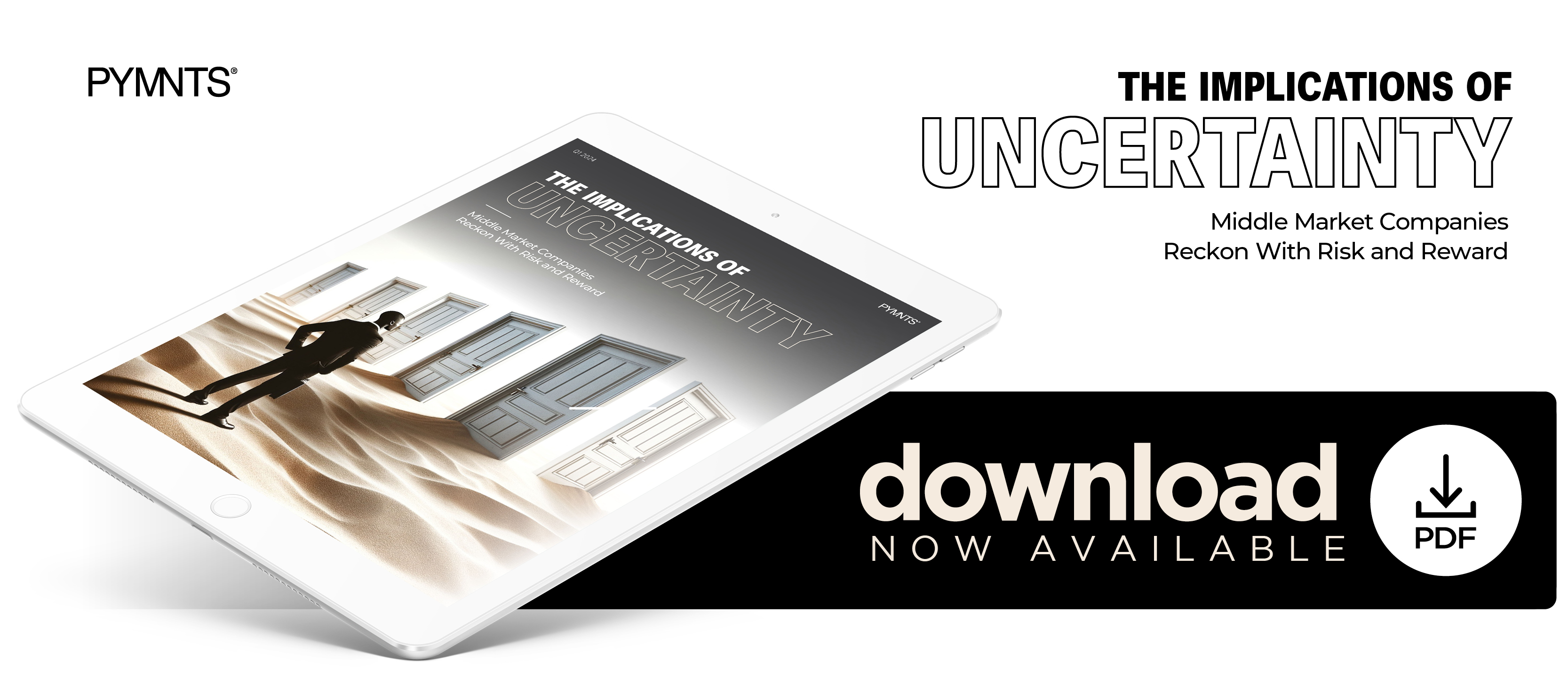Technology Turns Tax Compliance Into Growth Engine

Companies have a critical need for technology to help manage their tax obligations, Sovos CEO Kevin Akeroyd writes in the new PYMNTS eBook, “The Implications of Uncertainty.”
During my career, I’ve had the opportunity to manage businesses through a number of difficult and challenging periods. These ranged from tough and competitive markets to talent shortages to global economic slowdowns. The common theme that emerged in every one of these situations was the importance of surrounding myself with a talented team, aligning that team with a single “north star” and communicating transparently and frequently with all critical communities — employees, customers and investors.
Businesses and markets are cyclical, and practice builds muscle during the ups to mitigate the impact of the downs. Assessing your own operation should never stop. Self-scouting and the ability to identify and address weaknesses before a crisis or downturn hits is what provides the strength and resolve to get through it.
The compliance industry is not immune from uncertainty. Globally, there are more than 14,000 regulatory changes monthly covering over 19,000 tax jurisdictions, meaning compliance changes can be sudden, relentless and consequential. In 2024, we are witnessing more of the same, as tax authorities have either already announced new mandates and guidelines or are actively planning for them.
Because of this, three of the biggest challenges facing companies right now are risk, cost and lack of insights. Each of them can be addressed with the right technology and data
The risks posed by not meeting compliance obligations can range from a disruptive, time and resource-intensive audit to financial penalties and even criminal proceedings. But, in the pursuit of meeting rapidly changing tax rates and regulations, many businesses have responded to each change by investing in a patchwork of hardware and software that doesn’t scale, may be quickly outdated and puts a drain on resources.
At the same time, the pace of regulatory changes will continue to accelerate, with more governments gaining access to companies’ transactional data in real time. This leaves many in a position of having less insight into their data than the government — and even worse, unable to use predictive insights to spot transaction anomalies, errors and outliers in that data.
Companies have a critical need for technology that allows them to orchestrate, manage and analyze their tax obligations. Just as enterprise resource planning (ERP), customer relationship management (CRM) and human capital management (HCM) have all become holistic, cloud-based platform solutions that unlock tremendous business value, the need is there for a unified platform solution, and that is what we’re focused on delivering.
Like many industries, the advances in generative artificial intelligence (GenAI) also present tremendous opportunities for compliance management. AI will enhance our ability to anticipate regulatory changes based on past behaviors and future indicators. Then, we will be able to help companies begin preparing for changes before they are ever announced.
In addition to AI, cloud-native software, intelligent automation and API integrations with existing enterprise financial systems all contribute to an insights-rich finance function, one that transforms compliance from a business requirement into a force for growth.


